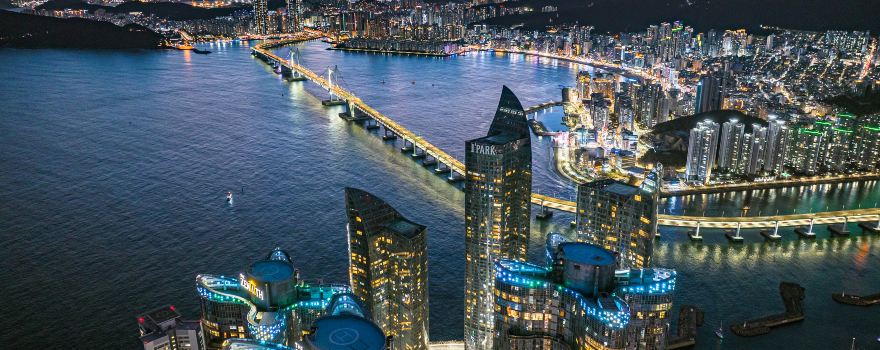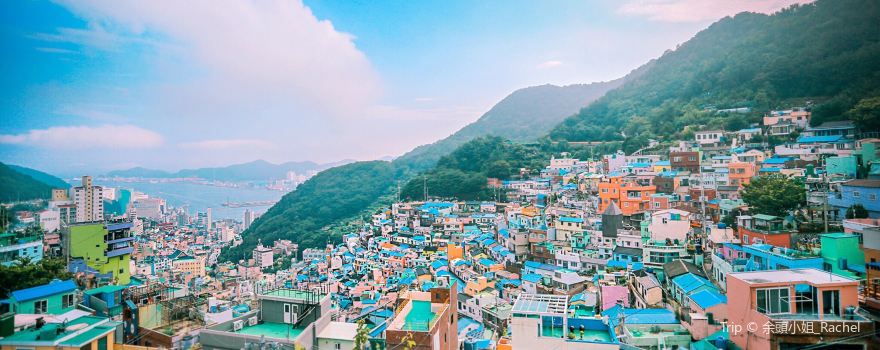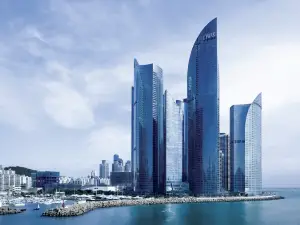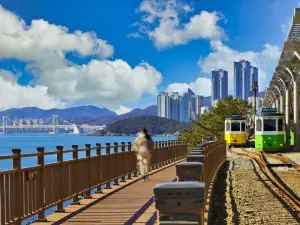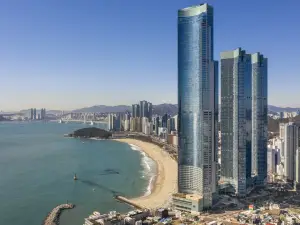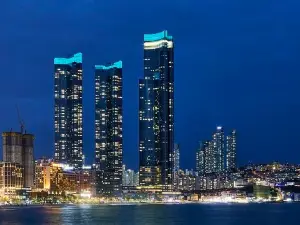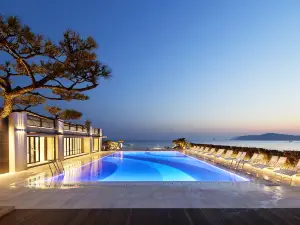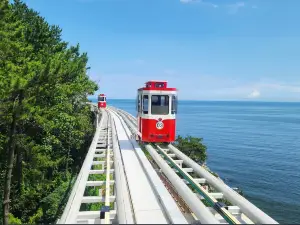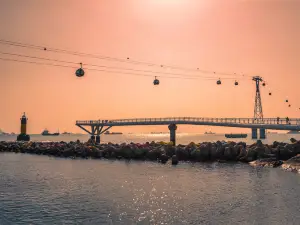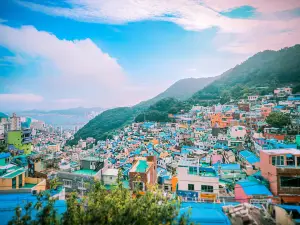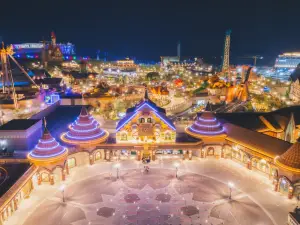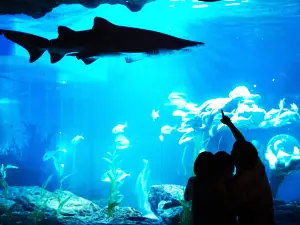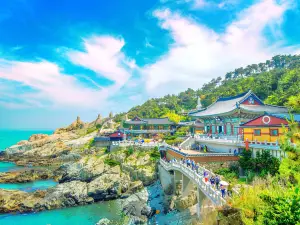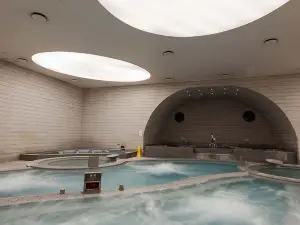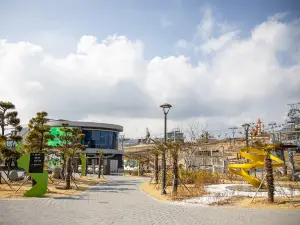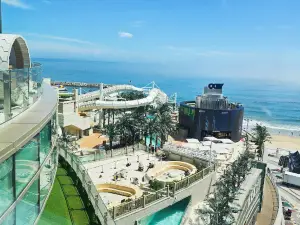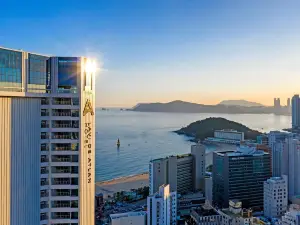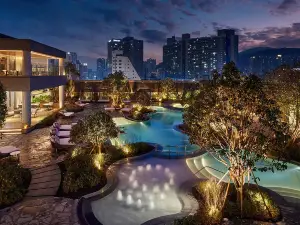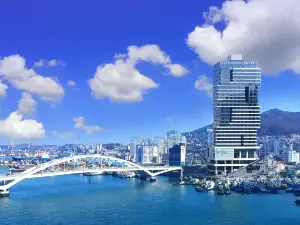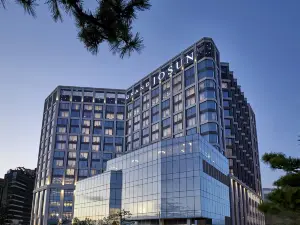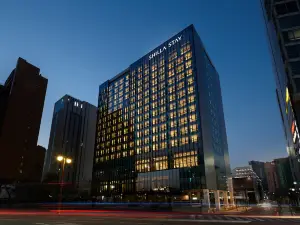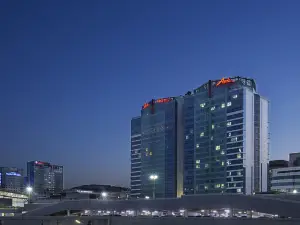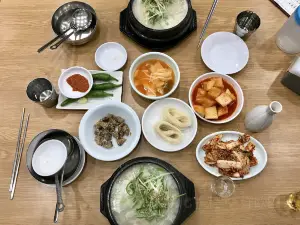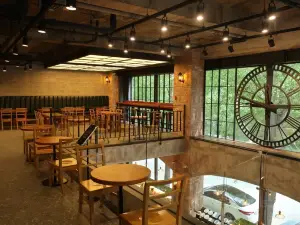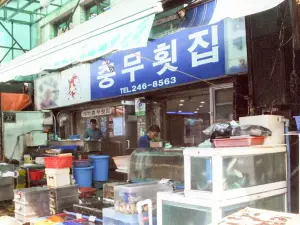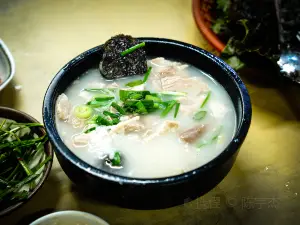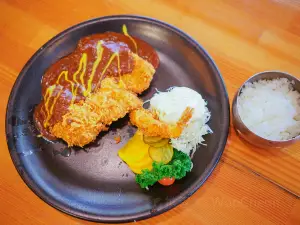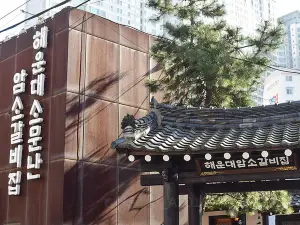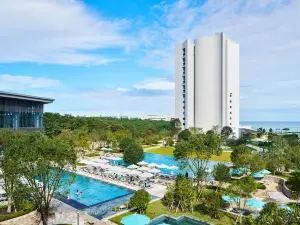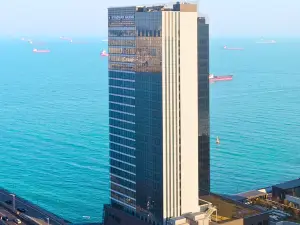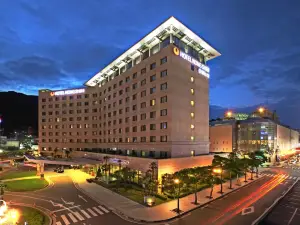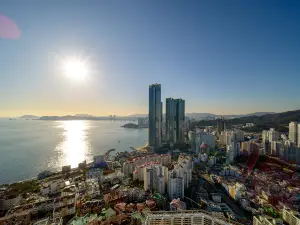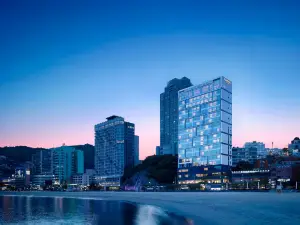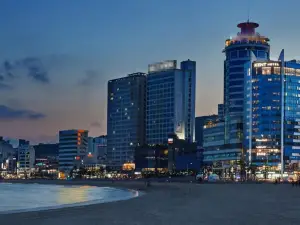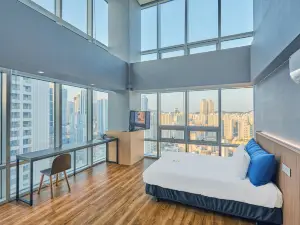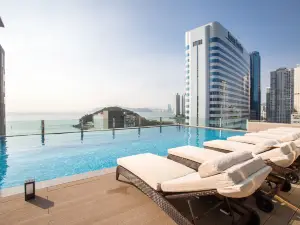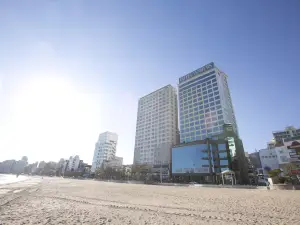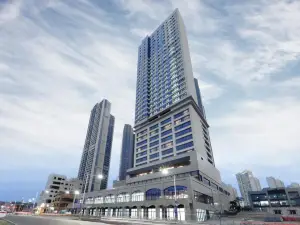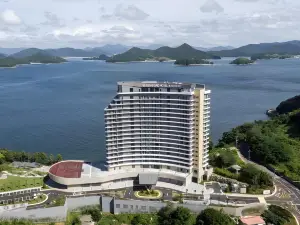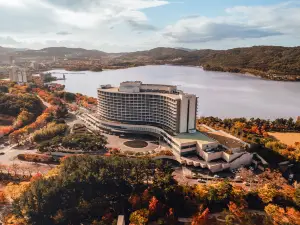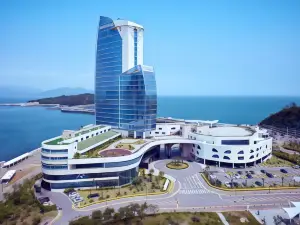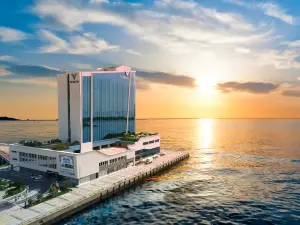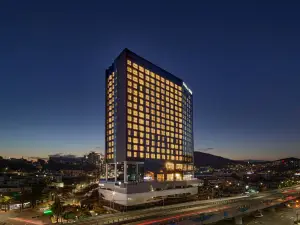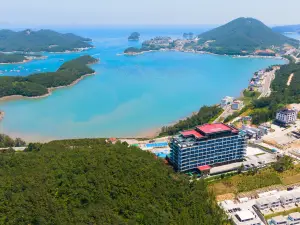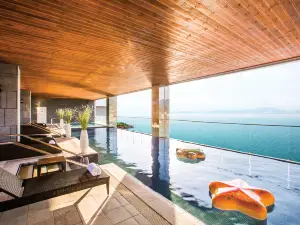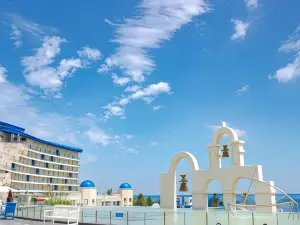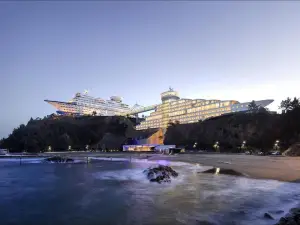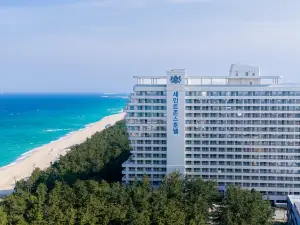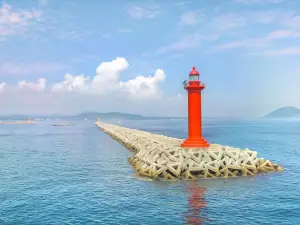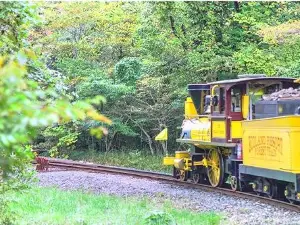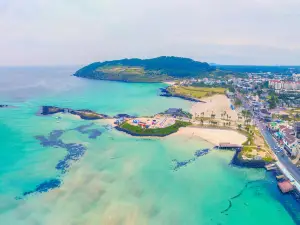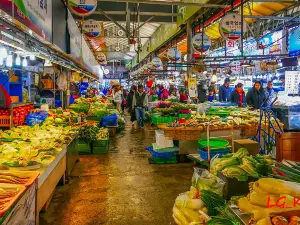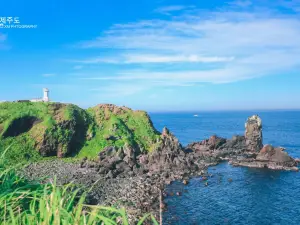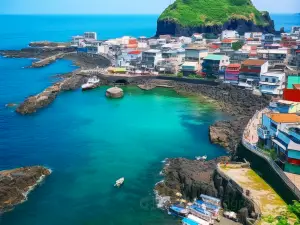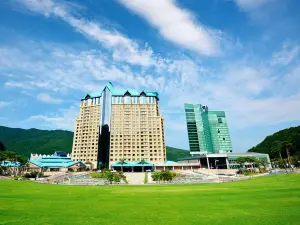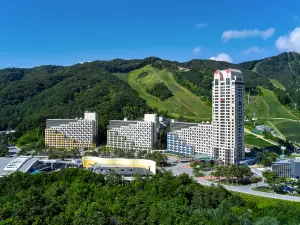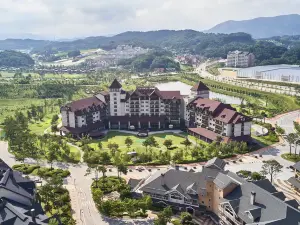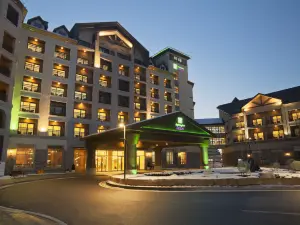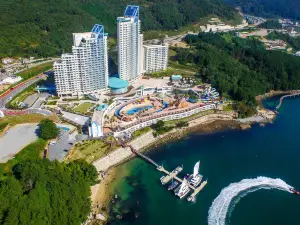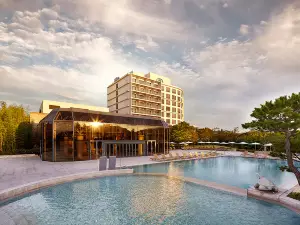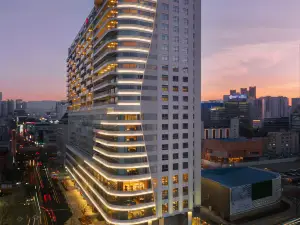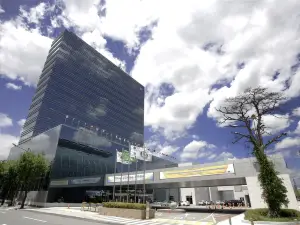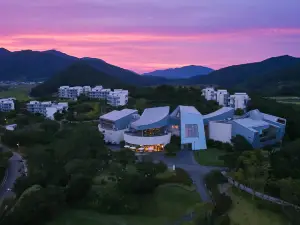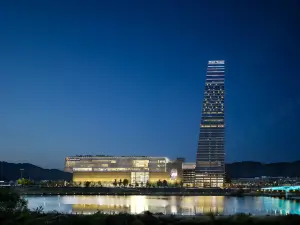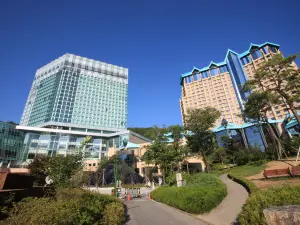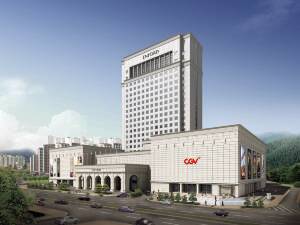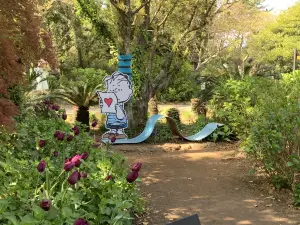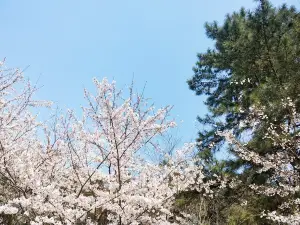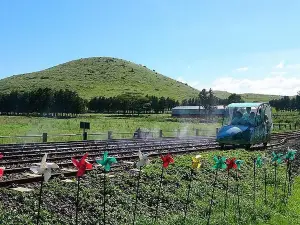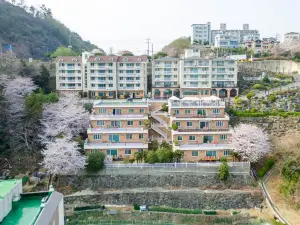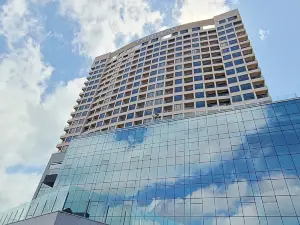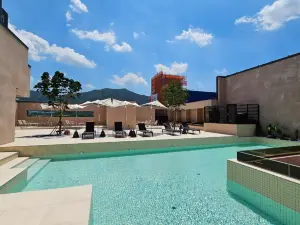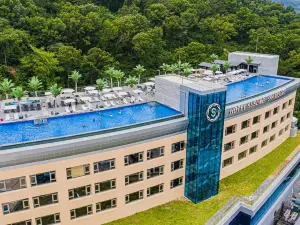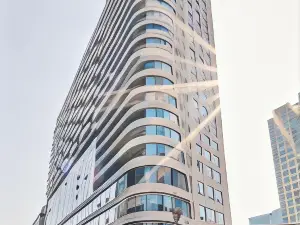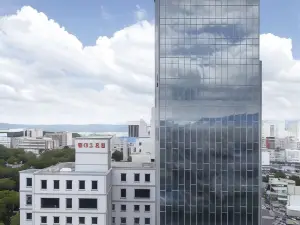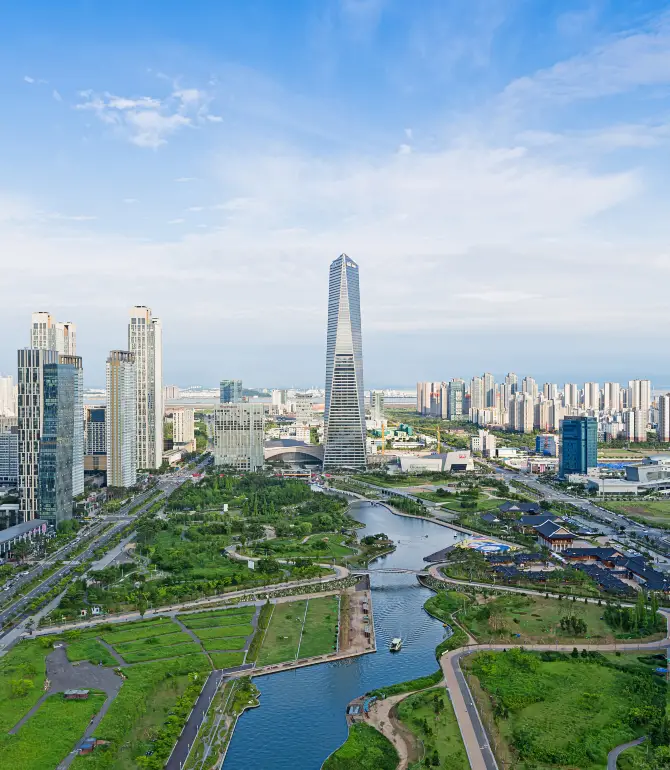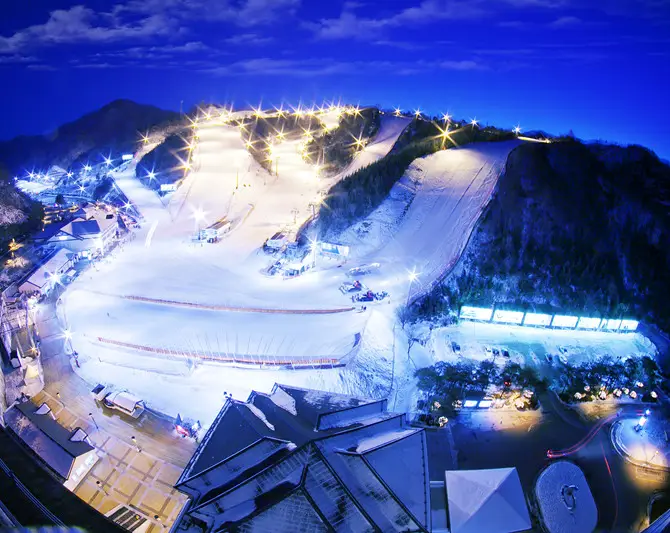Things to Do in Busan in 2025 - Top Attractions, Local Food, Hotels & Travel Tips (Updated April, 2025) | Trip.com
About Busan
Recommended trip: 2–4 day(s)
Recommended trip: 2–4 day(s)Current Weather Conditions
Busan Local Experiences Map

Trending in Busan
Busan Local Travel Guide 2025
Busan Brief Guide
Busan is a port city and one of South Korea's important transportation hubs for sea, land, and air. Busan's coastal sightseeing spots primarily include bathing beaches and coastal parks. Haeundae Beach and Songdo Beach are favorite destinations for local residents. The city's attractions include historical sites, museums and art galleries. For families traveling with children, the SEA LIFE Busan Aquarium is a great destination to experience the glass bottom boat atop the shark tank. Art lovers can visit the Gamcheon Cultural Village to enjoy the colorful and artistically painted walls. Busan is famous for its seafood. You can eat all kinds of fresh hoe—Korean sashimi. The nightscape of Busan will sweep you off your feet, with the brilliant lights of Gwangandaegyo Bridge and the city reflected by the water. As you stroll along the harbor, it is an intoxicating experience.
Busan Must-try Local Experiences
1. Discover the Charm of Busan Visit the vibrant murals, quirky sculptures, and stunning views at Gamcheon Culture Village; enjoy the beautiful scenery and lively atmosphere at Haeundae Beach; take in the dramatic cliffs, rocky coast, and sea views at Taejongdae Resort Park, with photogenic spots at the lighthouse and observation deck. 2. Find Peace at Haedong Yonggungsa Temple Explore Haedong Yonggungsa Temple, perched on a cliff overlooking the sea. Capture its colorful architecture and serene ambiance. 3. Explore Film History at the Busan Cinema Center Visit the architectural marvel of the Busan Cinema Center, one of the main venues of the Busan International Film Festival. Watch a film or attend a cinematic event. 4. Experience the Romance of the Busan Fireworks Festival Each fall, Gwangalli Beach hosts the Busan Fireworks Festival. Enjoy the sandy beach, listen to music, and marvel at the dazzling Gwangan Bridge lights and the spectacular fireworks above. 5. Taste Busan’s Culinary Delights Savor fresh seafood at Jagalchi Traditional Market, from sashimi to pork rice soup. Head to BIFF Square for street food like hotteok, spicy rice cakes, gimbap, fish cake skewers, and dried squid, and fully indulge in Busan’s food scene. 6. Enjoy Souvenir Shopping Dive into the bustling atmosphere of Nampo-dong Market, browsing everything from clothes to traditional crafts, and score bargains. Or head to Seomyeon for the latest trends, where you’ll find department stores, boutiques, and an underground shopping area. 7. Explore Shinsegae Department Store Shinsegae Department Store, the world’s largest shopping complex, offers a luxurious shopping experience with amenities like a spa and an ice skating rink. 8. Capture Night Views from Busan Tower Located in Yongdusan Park, Busan Tower provides panoramic city views, especially dazzling at night. Capture the glittering city lights from the observation deck. 9. Experience Busan’s Coffee Culture Discover Busan’s thriving coffee scene, enjoying brews in unique cafes, from seaside views to traditional spots. 10. Ride the Haeundae Blueline Park Train Take a scenic train or Sky Capsule ride along Haeundae Blueline Park’s coastal track, enjoying breathtaking ocean and landscape views.
Busan Travel Tips
1. Dress Modestly at Beomeosa Temple: When visiting Beomeosa Temple, dress modestly. Shoulders and knees should be covered out of respect for the religious site. Avoid revealing clothing and remove hats inside temple halls. Comfortable walking shoes are recommended due to the hilly terrain. 2. Shoes Off Indoors: Always remove your shoes before entering Korean homes, traditional restaurants, and some cultural sites. Look for shoe racks or follow the lead of locals. 3. Beach Safety Guidelines: Haeundae and Gwangalli beaches have designated swimming areas and lifeguards during the summer months. Stay within these areas and follow flag warnings for water conditions. Avoid swimming after heavy rain due to potential pollutants, and be cautious of rip currents, especially at Haeundae Beach. 4. Street Food Safety Tips: Street food in Busan is generally safe. Choose busy stalls with high turnover for freshness. Check vendor hygiene and avoid raw or undercooked seafood if you have a sensitive stomach. Opt for freshly made items and be mindful of the water used for cooking and washing. 5. Respectful Photography in Temples: Photography is often prohibited inside temples. Look for signs or ask permission before taking photos. Avoid using flash and be mindful of people praying or meditating. 6. Drone Usage Regulations: Flying drones in Busan requires prior permission from local authorities. Many tourist areas, beaches, and all military zones prohibit drone usage. Drones must be flown below 150 meters and within the operator's line of sight. Check regulations before flying.
Busan Must-see Attractions
Busan, a South Korean city, is renowned for its cultural and historical landmarks such as the artistic Gamcheon Culture Village, the bustling Haeundae Beach, the panoramic BUSAN X the SKY observatory, the serene Haedong Yonggung Temple, and the conservation-focused SEA LIFE Busan Aquarium, each offering unique experiences from artistic exploration to spiritual tranquility and interactive marine life encounters.
Busan Where to Stay
Busan is a vibrant coastal city in South Korea, offering a diverse range of accommodation options across its various districts.
Busan Food Guide
Busan's food scene is renowned for its comforting Dwaeji-gukbap, the freshest Saengseon Hoe (sashimi) straight from the sea, the culturally rich and nutritious Samgyetang, and the aromatic Dongnae-style green onion pancake, each offering a unique taste of the city's culinary heritage and local flavors.
Busan Useful Guide
Busan's transportation infrastructure is integral to its status as South Korea's second-largest city and a major international commercial port. Gimhae International Airport (IATA: PUS, ICAO: RKPK) is a key air transport hub located on the western end of Busan. It serves as the main hub for Air Busan and a focus city for several other airlines, connecting Busan to a multitude of domestic and international destinations. To reach the city center from Gimhae International Airport, travelers can utilize the metro station at the airport, which connects to Busan's subway system. Additionally, various ground transportation options such as buses and taxis are available. Busan's passenger ports, including the International Passenger Terminal and the International Cruise Terminal, are vital for regional connectivity. The International Passenger Terminal, located near Busan Station, can be accessed via a pedestrian deck from the KTX station, and it takes about 20 minutes to reach from KTX Busan Station to the International Cruise Terminal. These terminals serve as hubs for cruises and ferries to neighboring countries and are equipped with modern facilities to accommodate a large number of passengers.
Trip.Best: Busan
Things to do in Busan
What to Do
Lotte World Adventure Busan
SEALIFE Busan Aquarium
SPA LAND Centum City
Skyline Luge Busan
Huinnyeoul Culture Village
Where to Stay
What to Eat
Busan Moments: Through Travelers' Eyes

Busan Sky Capsule: A Scenic Ride Along Korea’s Coastline

Effortless Views: Ride the Beach Train at Haeundae Blue Line Park

Busan's famous cherry blossom cafe, 'Cafe Iti'

Train to Busan: KTX Ride Experience from Seoul to Busan

Busan is absolutely amazing

5-Day Busan, South Korea Itinerary (Budget: $430/person)

Date with Mom in Busan

6-Day Trip to South Korea for Just CNY 4,000 Per Person
Best of Busan
Site Operator: Trip.com Travel Singapore Pte. Ltd.
